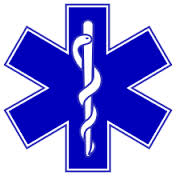Above: Firefighters on the Apple Fire, March 28, 2012. Photo by Bill Gabbert.
Today we are reprising a second article from our archives about heat related injuries and extreme physical exertion among wildland firefighters.
As we reported in the first Throwback Thursday article, Dr. Brent Ruby, who has studied firefighters as they worked on fires, said regarding the 2011 hyperthermia fatality on the CR 337 fire in Texas:
The lessons learned from this research clearly indicate that the best protection against a heat injury is reducing work rate.
Aggressive hydration strategies are over-preached and may provide a false sense of protection. It should be emphasized that the autopsy report as described in the fatality report indicated no signs of dehydration or electrolyte imbalance.
With that in mind, below is the article we wrote in 2016 after reports were released on two very serious injuries that occurred during the first two days of training for new firefighters.
****
Safely training the tactical athlete
 After reading the Facilitated Learning Analysis (FLA) about the Rhabdomyolysis (Rhabdo) injury that occurred May 2, 2016 in South Dakota on the first day of the fire season after running for more than nine miles before doing uphill sprints, I started thinking about, not so much WHAT happened, but how to prevent similar serious injuries.
After reading the Facilitated Learning Analysis (FLA) about the Rhabdomyolysis (Rhabdo) injury that occurred May 2, 2016 in South Dakota on the first day of the fire season after running for more than nine miles before doing uphill sprints, I started thinking about, not so much WHAT happened, but how to prevent similar serious injuries.
A couple of weeks before the Rhabdo case, on April 19 a wildland firefighter in the Northwest suffered a heat stroke while running on day 2 of their season. The employee was unconscious for several hours and spent four days in the hospital.
Both of these exercise-induced conditions can be life-threatening; 33 percent percent of patients diagnosed with Rhabdo develop a quick onset of kidney failure, and 8% of all cases are fatal.
Heat stroke can also kill, according to Medscape:
When therapy is delayed, the mortality rate may be as high as 80%; however, with early diagnosis and immediate cooling, the mortality rate can be reduced to 10%.
These two very serious incidents in a two week period that occurred at the beginning of the fire season should be a wakeup call for agencies employing wildland firefighters.
I am not a medical or exercise specialist, but neither were any of the four members of the South Dakota Rhabdo FLA team. It was comprised of a District Fire Management Officer, a Natural Resources Specialist, an Assistant Superintendent on a Hotshot crew, and an Assistant Fire Engine Operator.
A person might expect that for an exercise-induced injury that is fatal in eight percent of the cases, a medical expert and an exercise physiologist would be members of the team. The FLA concentrated on recognizing symptoms of Rhabdo, which is good. Firefighters need to be be informed, again, about what to look for. But the necessity of treating the symptoms could be avoided if the condition was prevented in the first place.
Prevention was not addressed in the document, except to mention availability of water. Dehydration isn’t the leading cause of Rhabdo, which is caused by exertion, but it can be a contributing factor.
With two life-threatening medical conditions on firefighting crews in a two-week period that occurred during mandatory exercise on day one and two of training, medical and exercise professionals perhaps could have evaluated what caused the injuries, and suggested how to design and implement a physical fitness program that would lessen the chances of killing firefighters on their first or second day on the job. But the LEARNING opportunity of the FLA was squandered.
The wildland fire agencies are not alone in hiring people off the streets and throwing them into a very physically demanding job. The military does this every day, as do high school athletic programs. There is probably a large body of research that has determined how to turn a person into an athlete without putting their lives in danger.
While the three firefighters and the natural resources specialist I’m sure meant well and did the best they could to write the FLA within the limits of their training and experience, the firefighting agencies need to get serious about a professional level exercise training program. After all, they are employing TACTICAL ATHLETES.
This issue is serious enough that the NWCG (since there is no National Wildland Firefighting Agency) should hire an exercise physiologist who can design, implement, and monitor a program for turning people off the street into tactical firefighting athletes.

